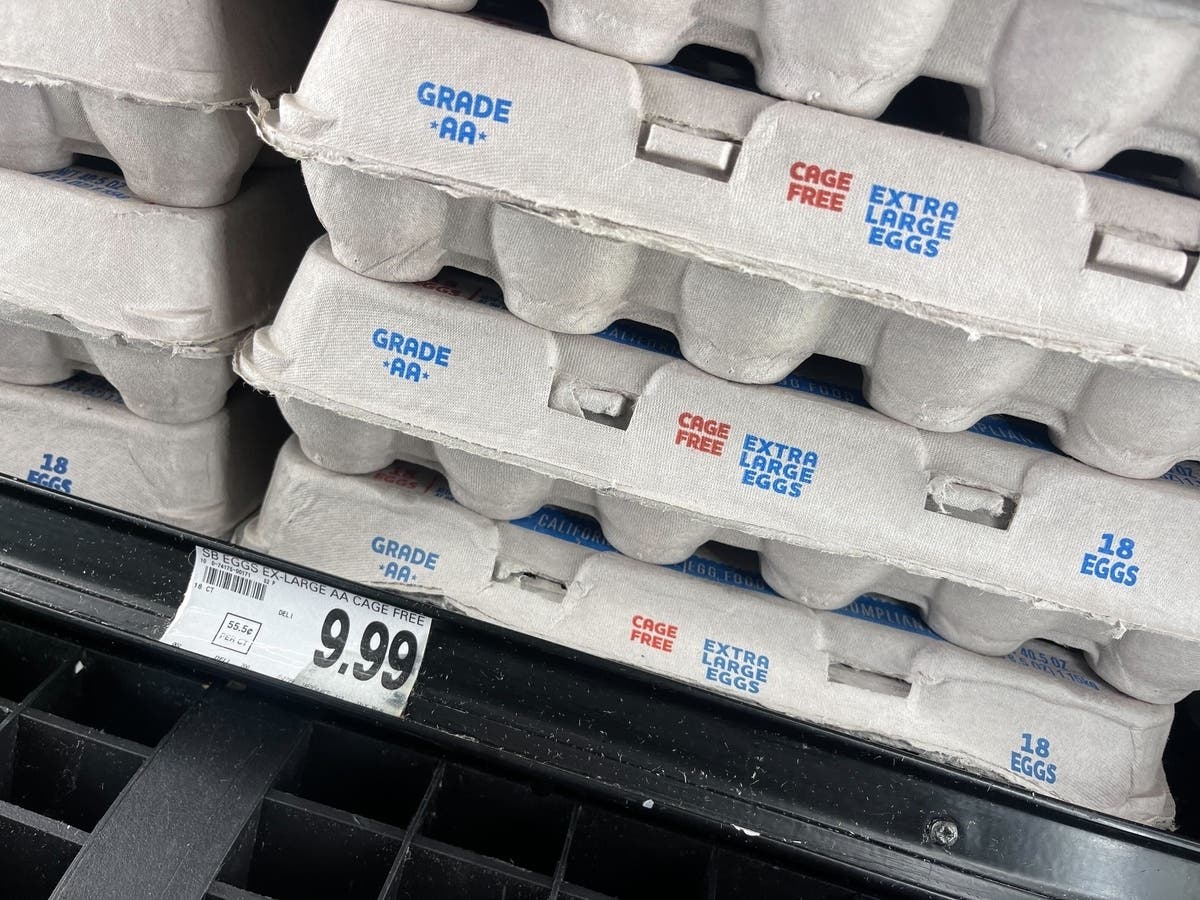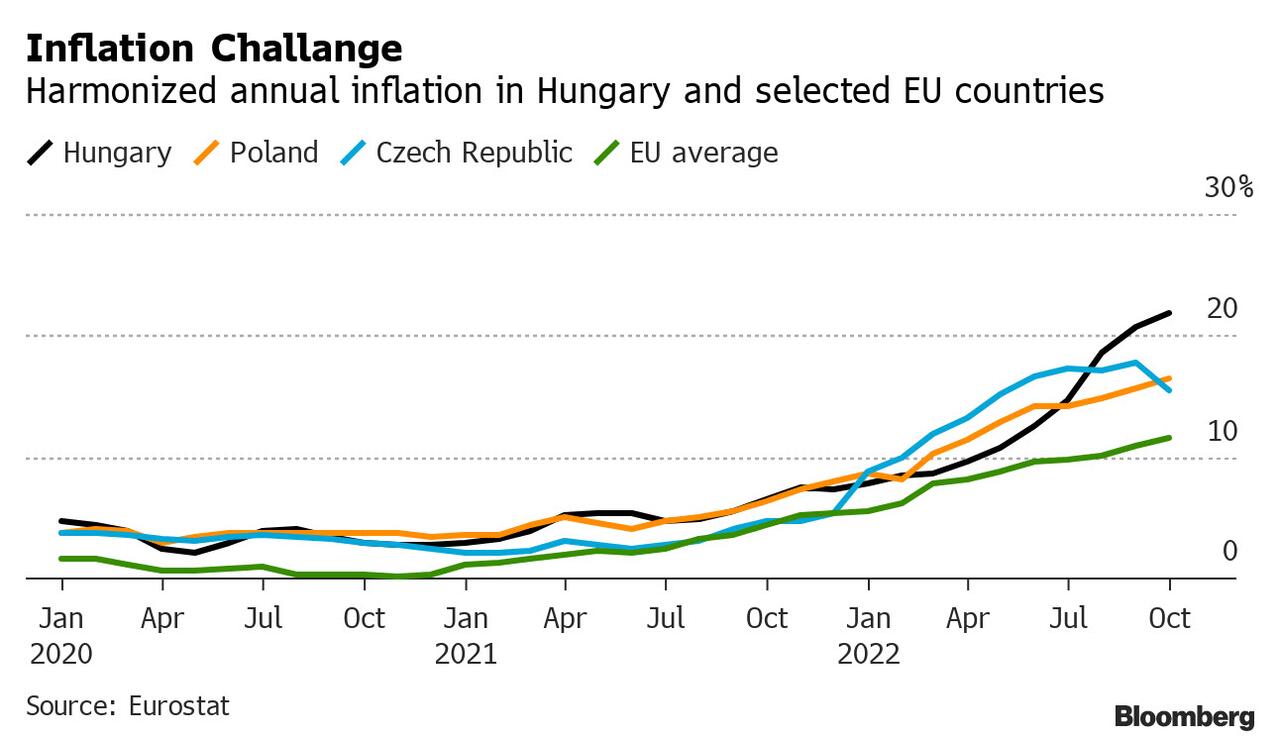Grocery Prices Soar: Inflation's New High

Table of Contents
Key Factors Driving Up Grocery Prices
Several interconnected factors contribute to the alarming rise in grocery prices. Understanding these underlying causes is crucial to addressing the problem effectively.
Rising Food Production Costs
The agricultural sector is facing a perfect storm of challenges, significantly increasing the cost of producing food.
- Increased energy costs: Fueling farm machinery, irrigating crops, and transporting goods to market all require significant energy, and the recent surge in energy prices is directly impacting food production costs.
- Higher fertilizer and pesticide prices: The global supply chain disruptions and increased demand for fertilizers and pesticides have led to price hikes, making it more expensive to cultivate crops.
- Labor shortages: A lack of available workers in the agricultural sector is driving up labor costs, further increasing the price of food production.
- Supply chain disruptions: Unexpected events, like extreme weather and port congestion, continue to impact the timely delivery of essential agricultural inputs, further driving up prices.
- Extreme weather events: Climate change is resulting in more frequent and intense extreme weather events, impacting crop yields and driving up food prices. Droughts, floods, and heatwaves all negatively affect harvests.
Global Supply Chain Issues
The global supply chain continues to be a major source of inflationary pressure on grocery prices.
- Lingering pandemic effects: The ongoing impact of the COVID-19 pandemic on logistics and transportation continues to create bottlenecks and delays, impacting the timely delivery of food products.
- Geopolitical instability: Conflicts and political instability in various regions of the world disrupt food production and trade, impacting the availability and cost of imported goods. The war in Ukraine, for example, significantly impacted global grain supplies.
- Port congestion and shipping delays: Persistent congestion at major ports worldwide causes delays and increases shipping costs, impacting the final price of goods at the supermarket.
- Increased demand: Increased demand for certain food items, sometimes driven by panic buying or changes in consumer preferences, can lead to shortages and price increases.
Increased Packaging and Transportation Costs
The cost of getting food from the farm to your table is also soaring.
- Rising fuel prices: The price of fuel directly impacts transportation costs, from farm to processing plant to supermarket shelves. This increase is passed onto the consumer.
- Increased packaging material costs: The demand for packaging materials has increased, leading to shortages and price hikes. This added cost is factored into the final price of goods.
- Shortages of key packaging components: The availability of essential packaging materials, like cardboard and plastic, has been impacted by supply chain disruptions, leading to price increases.
Impact on Consumers and Household Budgets
The soaring grocery prices are having a significant impact on consumers and their household budgets.
Reduced Purchasing Power
Rising grocery prices directly reduce consumer purchasing power, leaving less money for other essential expenses.
- Impact on lower-income households: Lower-income families are disproportionately affected, as a larger percentage of their income is already dedicated to food. This can lead to difficult choices between food and other necessities.
- Consumer trade-offs: Many consumers are making difficult trade-offs, such as reducing spending on non-essential items or cutting back on portions to manage their budgets.
- Real-life examples: Anecdotal evidence and survey data reveal a growing number of households struggling to afford nutritious food.
Changes in Consumer Behavior
Consumers are adapting their shopping habits to cope with the increased grocery costs.
- Shifting to store brands: Consumers are increasingly switching to cheaper store-brand products to save money.
- Reducing food waste: Consumers are becoming more conscious of reducing food waste to minimize grocery expenses.
- Meal planning and budget recipes: The popularity of meal planning and budget-friendly recipes is on the rise, as consumers seek ways to stretch their food budgets.
- Increased reliance on food banks: Unfortunately, many are turning to food banks and other food assistance programs to meet their basic food needs.
Strategies for Managing Rising Grocery Costs
There are strategies consumers can employ to manage the rising grocery costs.
Smart Shopping Techniques
Consumers can implement various smart shopping techniques to mitigate the impact of inflation.
- Utilize grocery store apps: Many grocery stores offer apps with coupons and discounts.
- Compare prices: Comparing prices across different stores can save significant money over time.
- Plan meals around sales: Planning meals around what's on sale can drastically reduce grocery bills.
- Buy in bulk: Buying non-perishable items in bulk can often lead to cost savings.
- Reduce food waste: Proper food storage and meal planning can significantly reduce food waste and save money.
Government Interventions and Support
Government policies can also play a crucial role in mitigating the impact of rising grocery prices.
- Food assistance programs: Expanding and improving existing food assistance programs can help vulnerable populations.
- Price controls and subsidies: While controversial, price controls and subsidies on essential food items can help alleviate the burden on consumers.
Conclusion
The dramatic increase in grocery prices, caused by a confluence of factors including rising production costs, global supply chain disruptions, and increased transportation and packaging expenses, is placing significant pressure on household budgets. The impact is felt most severely by lower-income families, forcing them to make difficult choices and adapt their spending habits. "Grocery prices soar" is no longer a headline; it's a stark reality for millions. Don't let soaring grocery prices break your budget. Learn more about managing rising food costs and discover effective strategies to combat the impact of grocery inflation. By implementing smart shopping techniques and staying informed about inflation trends, we can all navigate this challenging economic climate more effectively.

Featured Posts
-
 Wtt Press Conference A Revolutionary Approach To Competition
May 22, 2025
Wtt Press Conference A Revolutionary Approach To Competition
May 22, 2025 -
 Serialul Anului Pe Netflix Distributie De Oscar Si Un Scenariu Impresionant
May 22, 2025
Serialul Anului Pe Netflix Distributie De Oscar Si Un Scenariu Impresionant
May 22, 2025 -
 Walliams And Cowells Fallout Celebrity Rift Deepens
May 22, 2025
Walliams And Cowells Fallout Celebrity Rift Deepens
May 22, 2025 -
 Tikkie Gebruiken Een Handleiding Voor Nederlandse Bankrekeningen
May 22, 2025
Tikkie Gebruiken Een Handleiding Voor Nederlandse Bankrekeningen
May 22, 2025 -
 3 Gas Economic Slowdown Impacts Fuel Costs Nationwide
May 22, 2025
3 Gas Economic Slowdown Impacts Fuel Costs Nationwide
May 22, 2025
